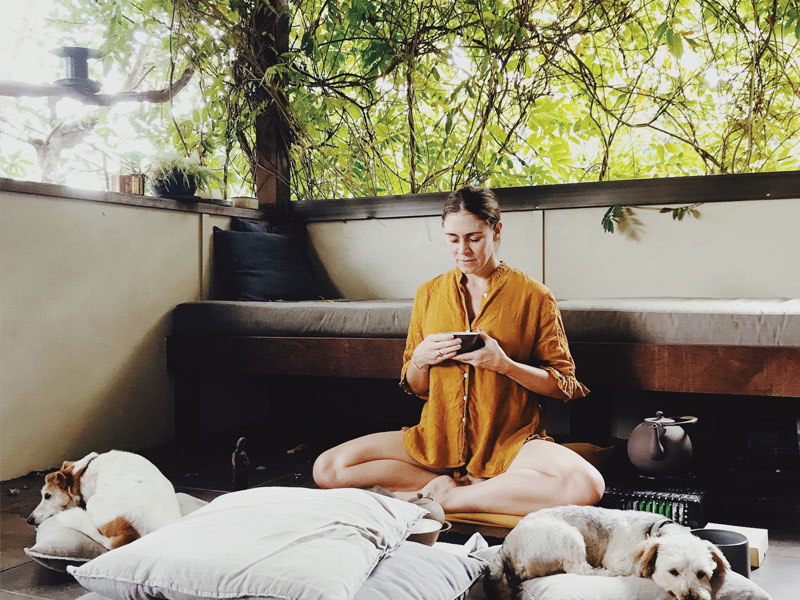
Jacqui Lewis and Arran Russell are best known as the powerhouse team behind The Broad Place, a global school for creativity, clarity and consciousness. Now, they have released their first book High-Grade Living, a modern guide to wellbeing. Here we share an extract from the book focusing on one of the pillars of meditation: breath meditation.
We recommend learning meditation in person with a teacher, rather than from a book. However, you can get started on your own with a beginner’s style of meditation that is widely used, where the breath is the focal point.
Even though we’re breathing all the time, we often forget to breathe deeply and properly in the course of our day. Breath meditation helps us centre ourselves and become completely aware and present.

Putting into practice
First, get yourself into a comfortable seated position. Sitting still is very important for this technique, so finding a way to sit comfortably is key.
Ideally, you should start breath meditation by sitting cross-legged on the floor, with your back straight. Some find it helpful to sit on a cushion to raise the buttocks off the ground and allow the legs to fall gently forward.
However, you may find that while sitting on the floor without a back support, you slump your back and shoulders. It’s important to have a straight back, so we recommend sitting on a chair to begin with if you need that extra support. Experiment with both methods and find what works best for you.
Once seated, ensure that the spine is straight, the chin gently tucked in and the shoulders relaxed. Rest your hands comfortably and gently in your lap.
Close your eyes and become aware of your breathing. Your breaths should be light and easy, and gradually become longer in length.
Your breath is your guide during this meditation and it is what you come back to as an anchor for the busy mind.

Now move your focus to place your awareness on the lower belly. In Japanese practice this is known as the hara. Focus your mind intently there and breathe into this space. The belly should expand with each breath in and contract with each breath out. Each time you are distracted by thoughts (which will be constantly), this is the space you come back to.
As you concentrate on your breaths, the mind will dash about, the body will distract and surrounding noises will pester you. Don’t worry; this is normal. When you find yourself distracted, simply come back to the breath. How does it feel in the body? Are the breaths long and slow, or are they shortening naturally? Bring your awareness back to the hara and your attention back to the breath.
Repeat this practice once or twice a day for 15 minutes. Routine is very important and will ground your practice.


This is an extract from High-Grade Living, out now. Text and images by Jacqui Lewis and Arran Russell with design by Arran Russell.
AU$49.99
Posted on November 23, 2020